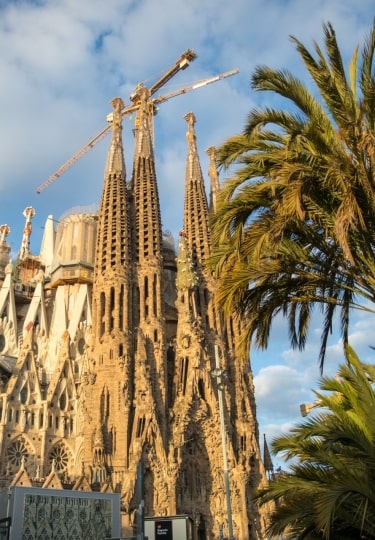Spain is known for its unfathomably beautiful churches. Spain has a strong Catholic background and as such, churches are found in every town and city across the mainland and its archipelagos.
These sacred landmarks are unchanged by time, drawing curious travelers for their elaborate architecture, museum-worthy artwork, and fascinating backstories.
From Bilbao’s Cathedral of Santiago to Barcelona’s La Sagrada Familia, discover the 13 most stunning churches in Spain below.
Basilica of Santa Maria, Alicante
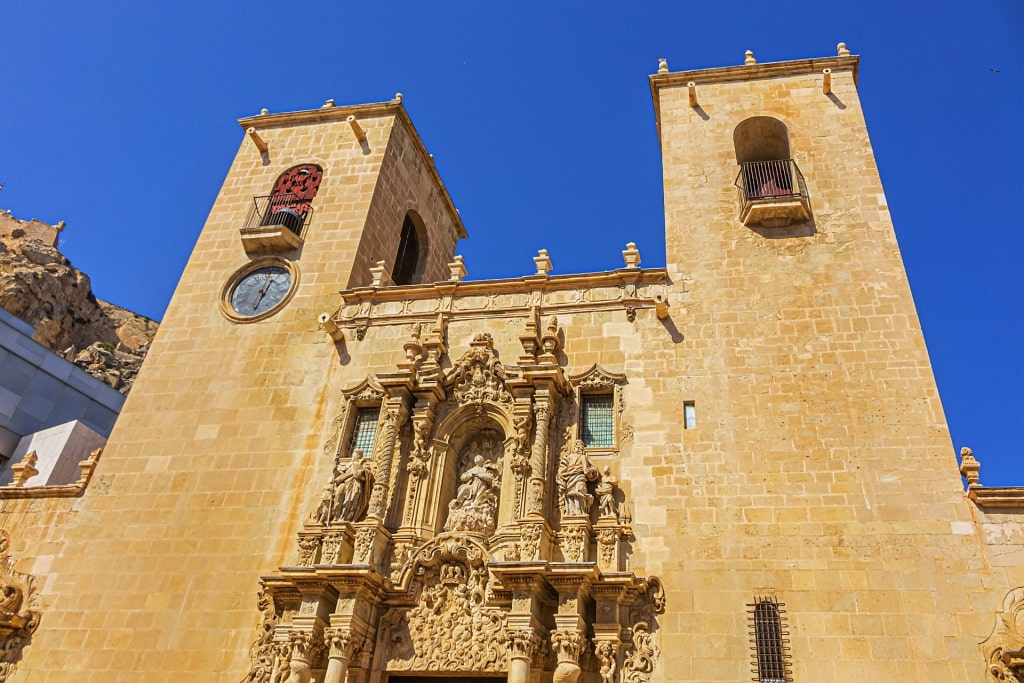
Basilica of Santa Maria, Alicante
The oldest church in Alicante is the Basilica of Santa Maria in the city’s characterful old town.
Built in the 14th century on the remains of a large mosque, the elegant church features two towers, one built in the 14th century and one added in the 18th century, and a single nave.
Visit the Basilica of Santa Maria to witness its remarkable baroque exterior and rococo high altar. Admire the sculptor Juan Bautista Borja’s image of the Virgin Mary in the entrance; as well as the Bautismo, Inmaculada, and Comunión chapels, and the exquisite Valencian baroque organ dating back to 1653.
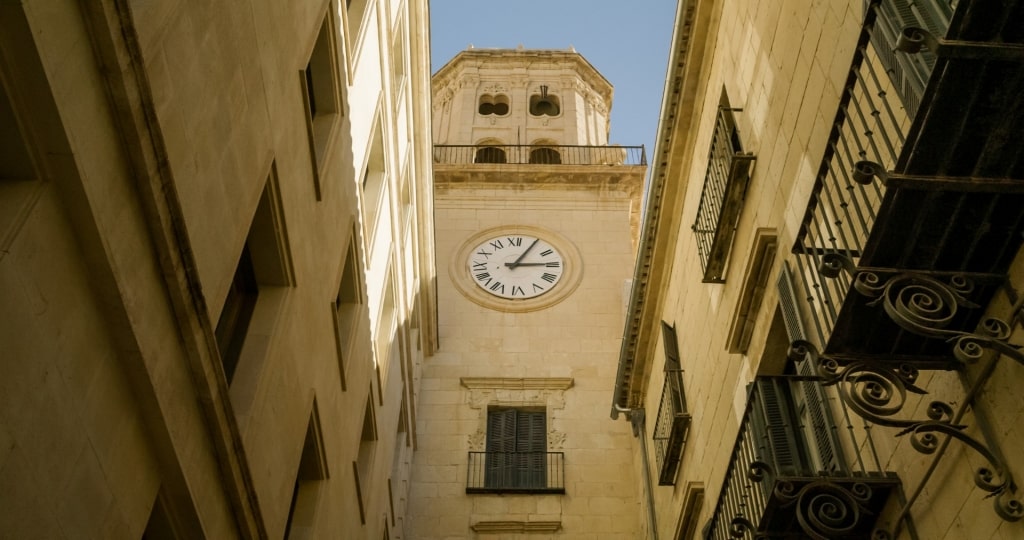
Basilica of Santa Maria, Alicante
Outside the basilica, you could easily lose a couple of hours ticking off your list of the best things to do in Alicante, such as wandering the narrow winding streets of its old town.
This sublime, caramel-hued church is sandwiched between two of the city’s art institutions: Gravina Museum of Fine Arts and the Contemporary Art Museum of Alicante, with many wine bars and tapas restaurants dotted around the neighborhood.
Cadiz Cathedral, Cadiz
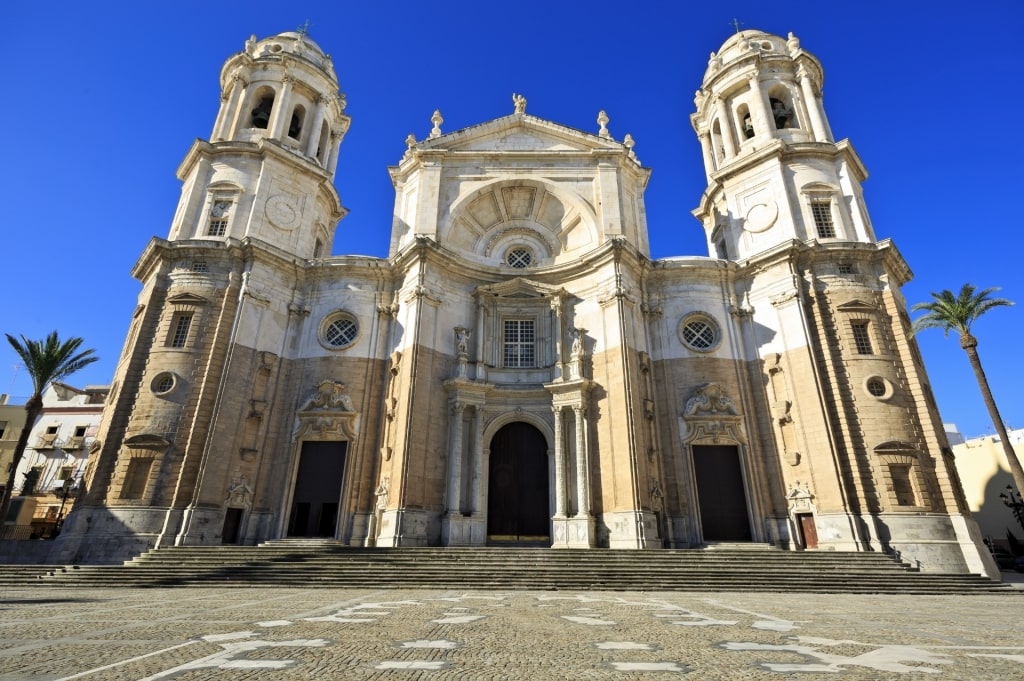
Cadiz Cathedral, Cadiz
In the city of Cadiz in Southern Spain, the gold-domed cathedral with its two graceful towers is a pleasing fixture on the skyline.
Officially called Catedral de la Santa Cruz de Cádiz, this beguiling Spanish church lies on the edge of the city’s old town by the waterfront. The gleaming stone building took over a century to build, between 1722 to 1838, merging several architectural styles, including baroque, rococo, and neoclassical.
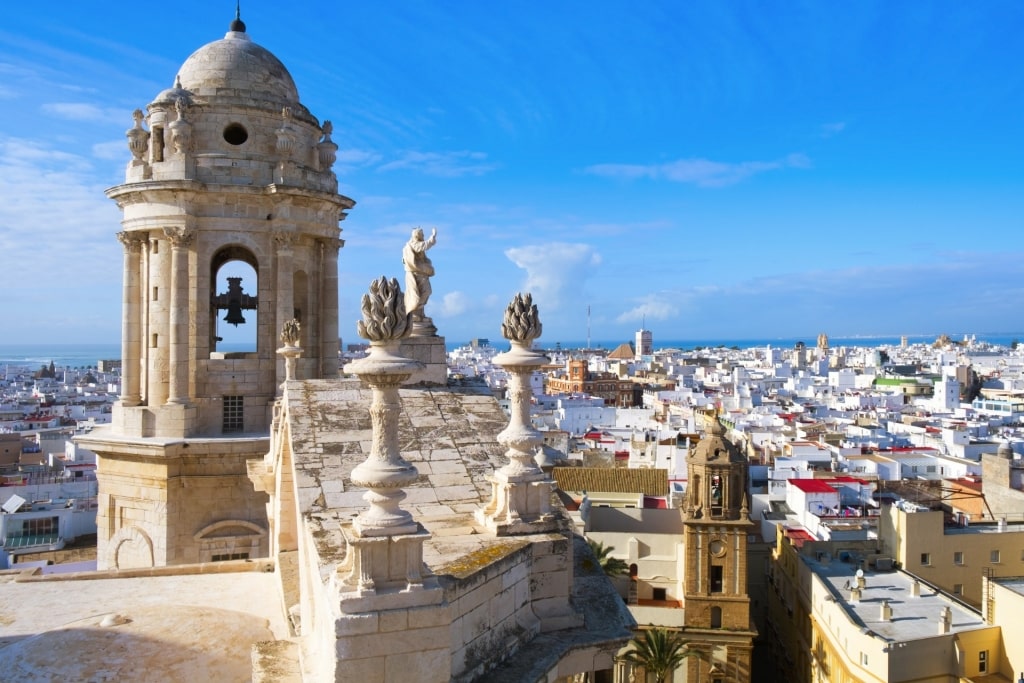
Cadiz Cathedral, Cadiz
Travelers can climb the eastern bell tower, Torre de Poniente, for spectacular views stretching across Cadiz.
After admiring the vaults of the high altar and viewing the crypt of Spanish composer Manuel de Falla, step out into the cobbled square in front of the cathedral.
Lined with tall palm trees and outdoor restaurants, it’s a relaxing spot for afternoon coffee and one of the best spots to breathe in Cadiz’s old-town charm.
Read: Best Things to Do in Cadiz
Church of San Anton, Bilbao
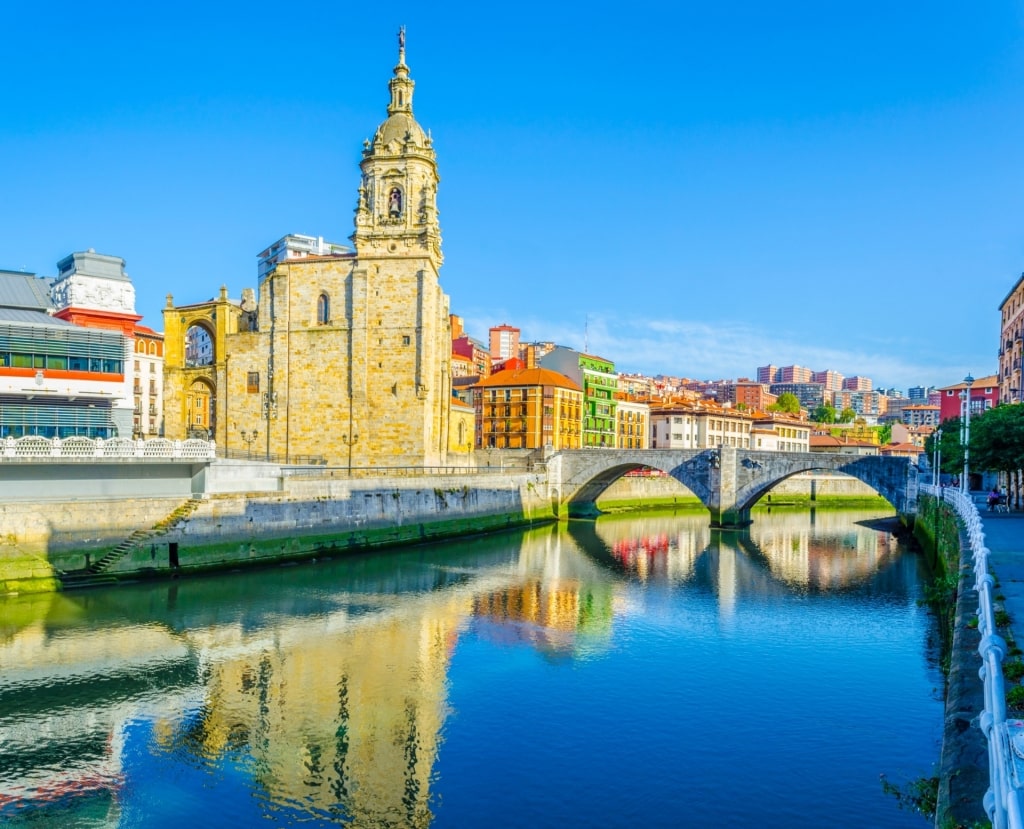
Church of San Anton, Bilbao
Bilbao’s Church of San Anton lies by the river in Casco Viejo, the Basque capital’s old quarter.
The Church of San Anton faces Bilbao’s famous La Ribera Market, a haven of gourmet Basque Country produce.
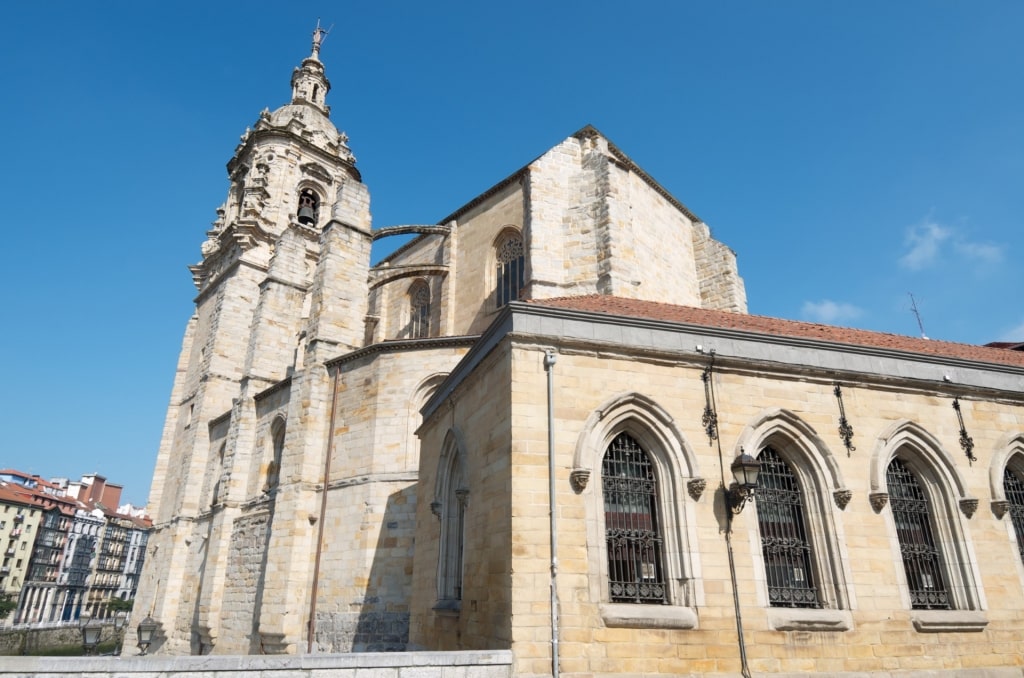
Church of San Anton, Bilbao
The mid-15th-century church has a striking gothic bell tower, with elements of renaissance and baroque also woven into the architecture that Spain is known for. Explore inside to see works by sculptor and architect Guiot de Beaugrand and painter Luis Paret y Alcázar.
Take stock of this ancient church and its medieval walls by wandering over San Anton Bridge, straddling the Nervion River, to the south of the church.
La Sagrada Familia, Barcelona
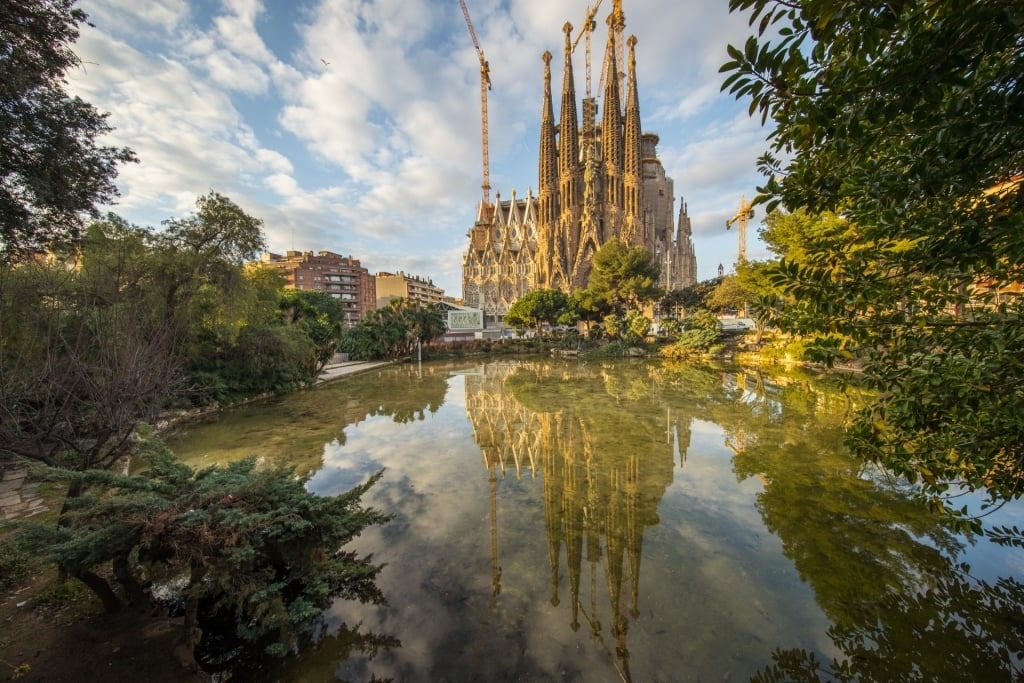
La Sagrada Familia, Barcelona
Churches in Spain don’t get more famous than Barcelona’s La Sagrada Familia—one of the most recognizable landmarks in the world.
This Antoni Gaudí-designed UNESCO World Heritage Site is nearing completion after so far taking 140 years to build. Even if you’ve visited the beautiful church before, there’s always something new to catch your eye.
Eighteen towers—12 dedicated to the Apostles, four to the Evangelists, one to the Virgin Mary, and one to Jesus Christ—will pierce the skyline of Barcelona once the basilica is complete.
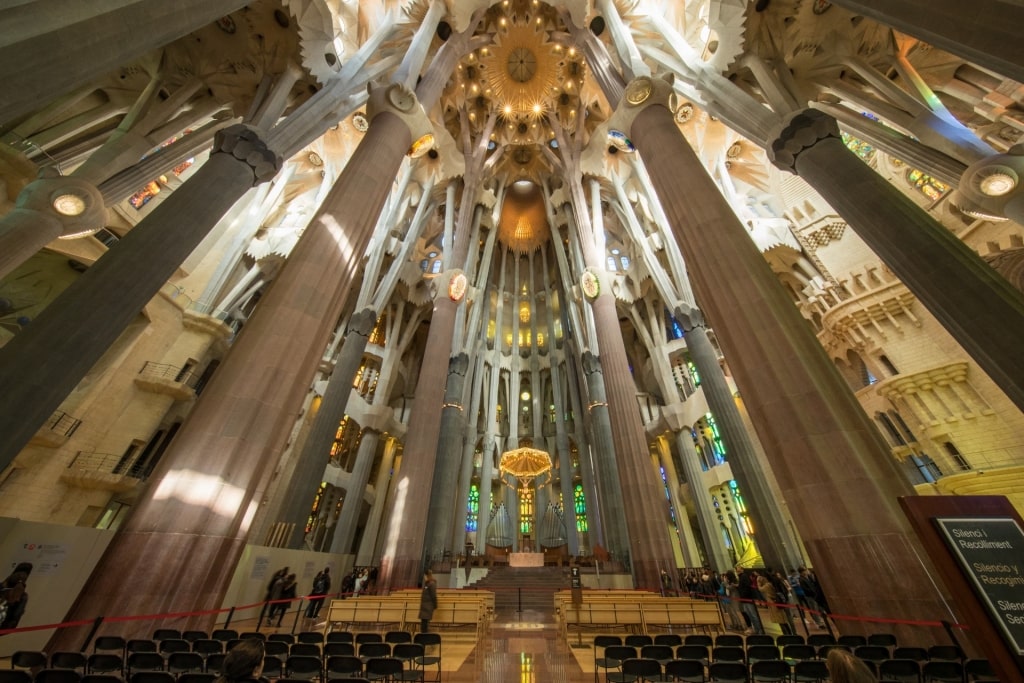
La Sagrada Familia, Barcelona
Step inside to gaze at the soaring columns that rise up to the mesmerizing vaulted ceiling. You could visit Antoni Gaudí’s burial site in the Virgen del Carmen chapel within the crypt and marvel at the bronze Door of Glory, designed by sculptor Josep Maria Subirachs.
Visit La Sagrada Familia early to beat the crowds. Afterward, visit the fabulous shops and museums in the trendy El Born, one of Barcelona’s best neighborhoods.
Cathedral of Murcia, near Cartagena
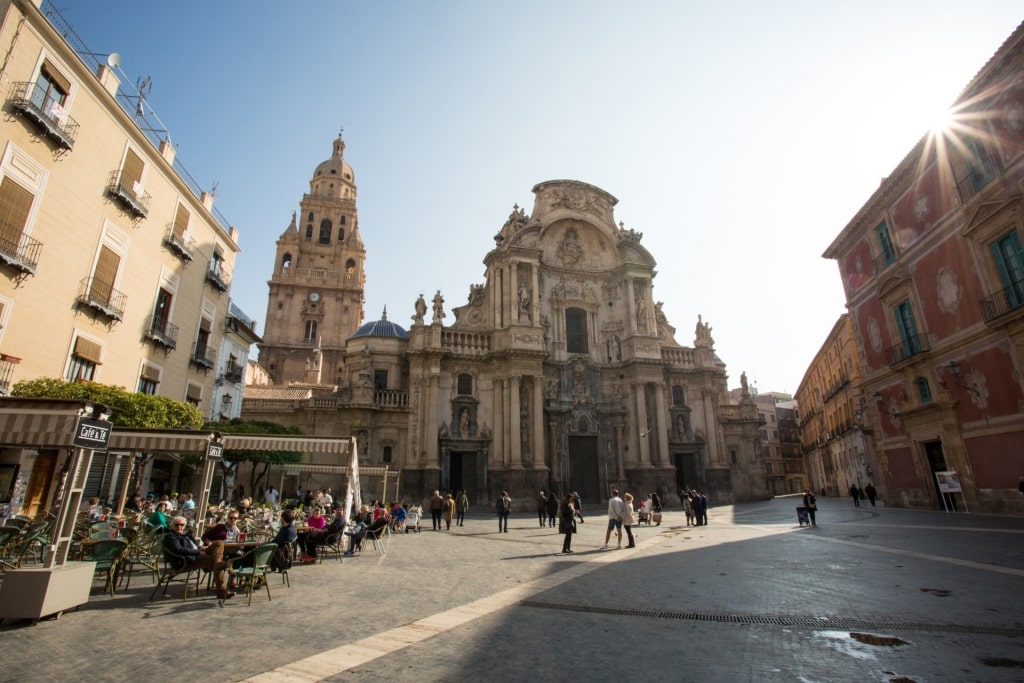
Cathedral of Murcia, near Cartagena
This head-turning cathedral—the longtime lifeblood of Murcia—was completed in 1467 on the site of an earlier mosque.
The Cathedral of Murcia near Cartagena displays a lavish exterior with elements of Renaissance, Baroque, and Neoclassical styles; a Gothic interior, and a 312-foot bell tower that can be climbed by visitors.
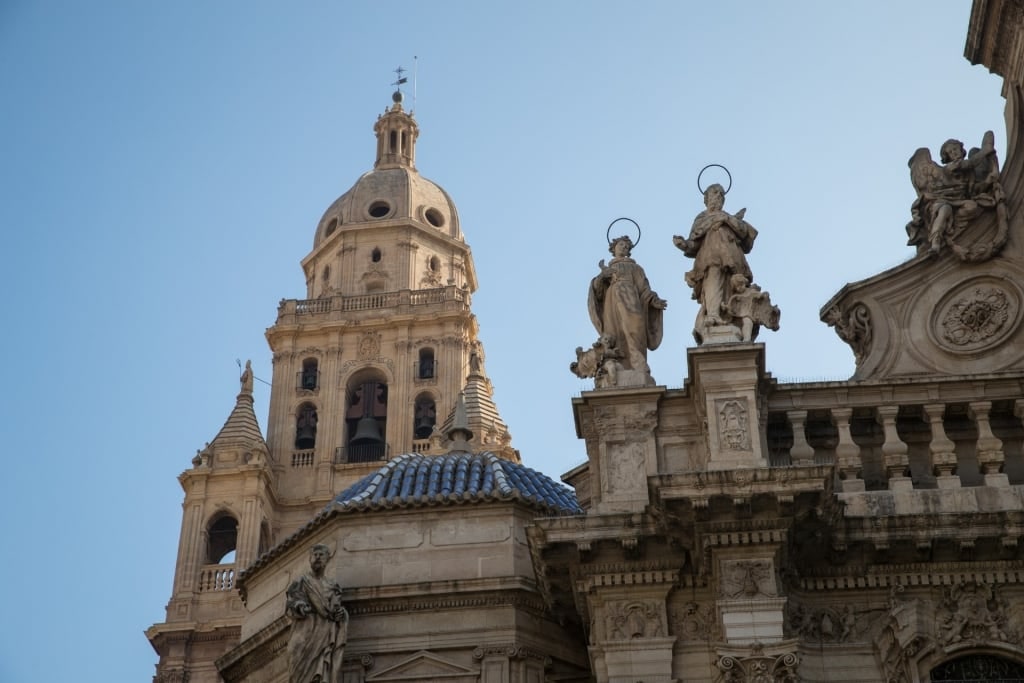
Cathedral of Murcia, near Cartagena
Discover the vaulted ceilings with the star-shaped skylights within Los Vélez Chapel and the Junterones Chapel with its rich Spanish Renaissance decor.
Explore the cathedral’s Gothic cloister—the oldest part of the church—operated as a Spanish museum since 1957. Visitors can take in breathtaking frescoes, paintings, and sculptures within the cloister.
With 4,000 pipes laid out over four floors, the cathedral’s world-renowned organ is another showpiece.
Catedral de Eivissa, Ibiza
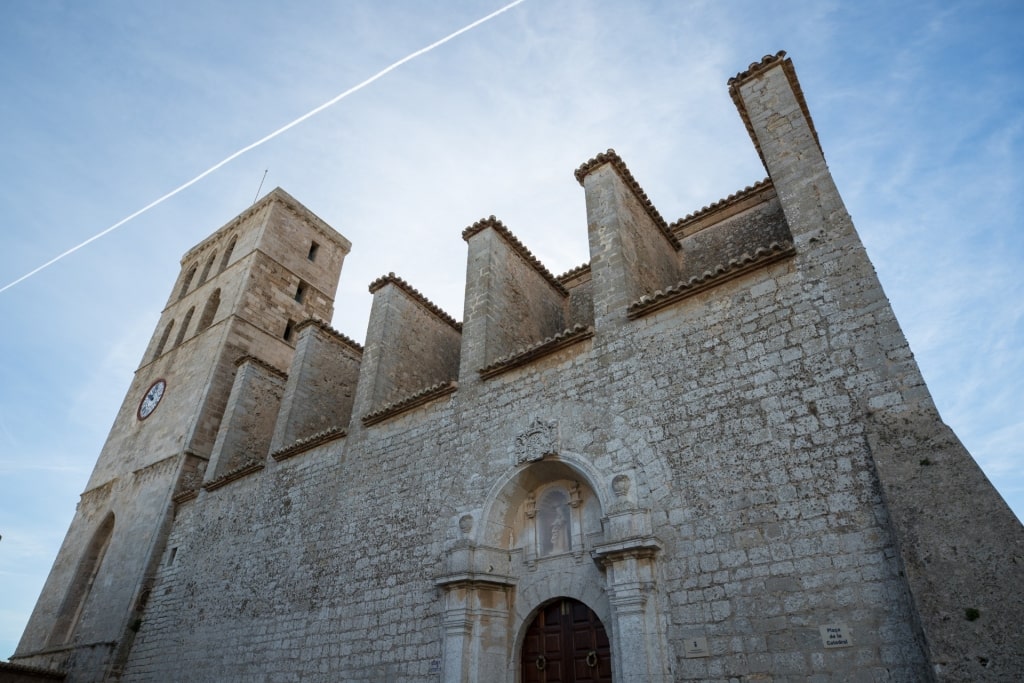
Catedral de Eivissa, Ibiza
On the island of Ibiza, better known for its sultry beaches and hedonistic nightlife, the stone-white Catedral de Eivissa looms over the enthralling Old Town.
Construction on the church of Santa María started in the 13th century and has been extended and modified in the centuries that has followed.
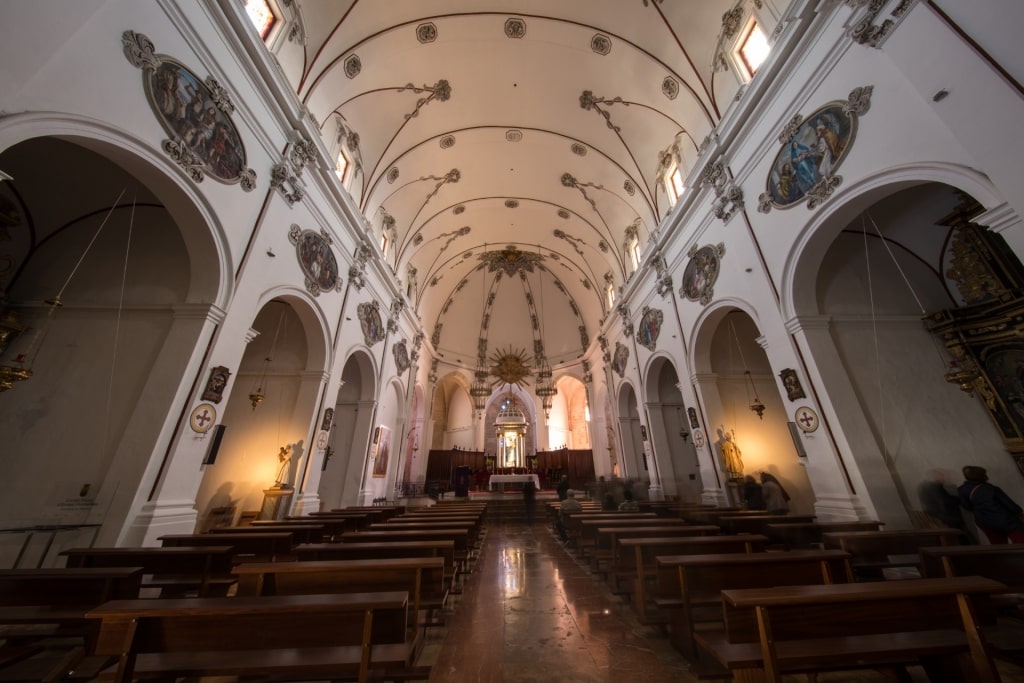
Catedral de Eivissa, Ibiza
The original rectangular building lies in the central nave. Among the additions are side chapels built between the late 14th and early 16th centuries.
Explore the Diocesan Museum within the Cathedral of Eivissa, which displays art and artifacts from the 13th to 20th centuries, including sculptures, paintings, rosary beads, jewelry, and crucifixes.
The elevated position next to the Castle of Ibiza affords views of Ibiza Town and the sparkling Mediterranean beyond.
Read: Best Things to Do in Ibiza
Cathedral of Santiago, Bilbao
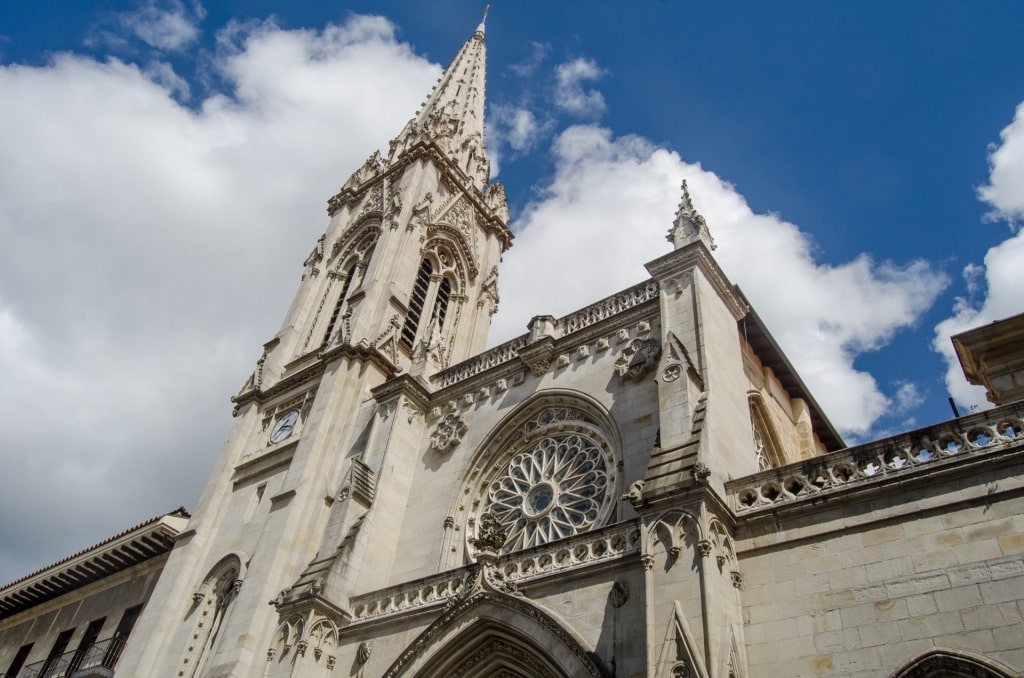
Cathedral of Santiago, Bilbao
The grandiose Cathedral of Santiago is one of the most famous churches in Spain for its extraordinary Basque gothic architecture.
Built in the late 14th and early 15th centuries, this Casco Viejo (old town) landmark is the oldest church in Bilbao and demonstrates a Latin-cross floor plan with three beautiful naves.
Pick up an audio guide to tour the cathedral’s many points of interest, including the vaulted cloister, the main chapel, and the Chapel Of St. Anthony The Great.
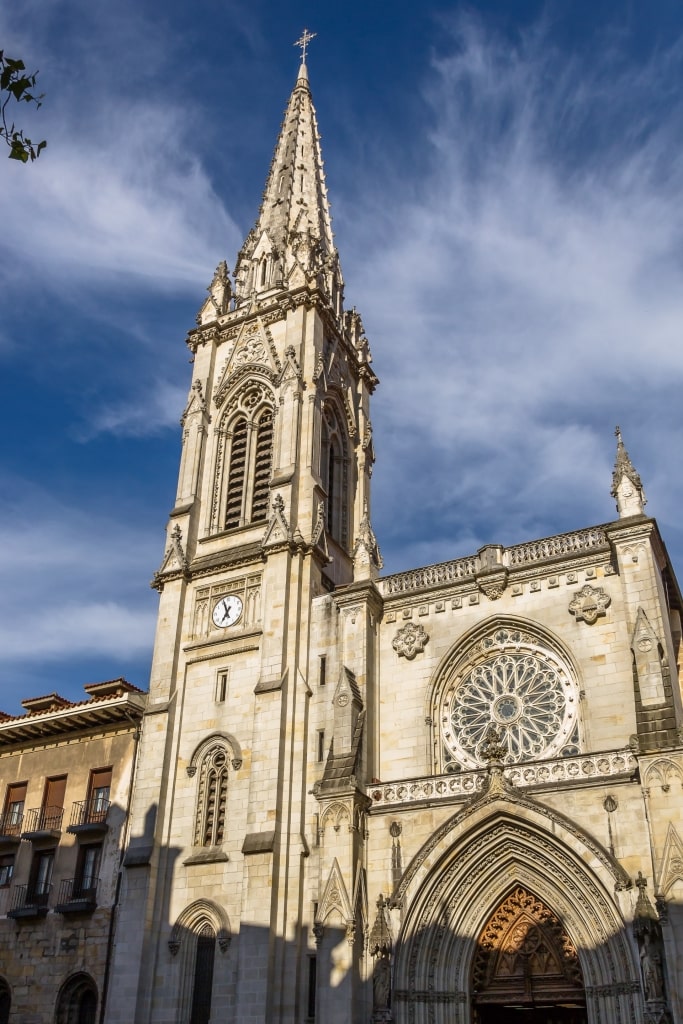
Cathedral of Santiago, Bilbao
You’re actually better off admiring the 210-foot spire, which sits atop the stone bell tower, from outside the Casco Viejo. You’ll be sure to hear the 11 bells toll from the old town’s narrow streets, though.
Once you’ve soaked in the details of this glorious building, one of the best things to do in Bilbao is to find a cozy table to enjoy some of the city’s famous pintxos. These delicious savory morsels—such as anchovies, olives, cured meats, cheeses, and tortillas—are typically served on small, toothpick-sized skewers in bars around Casco Viejo.
Malaga Cathedral
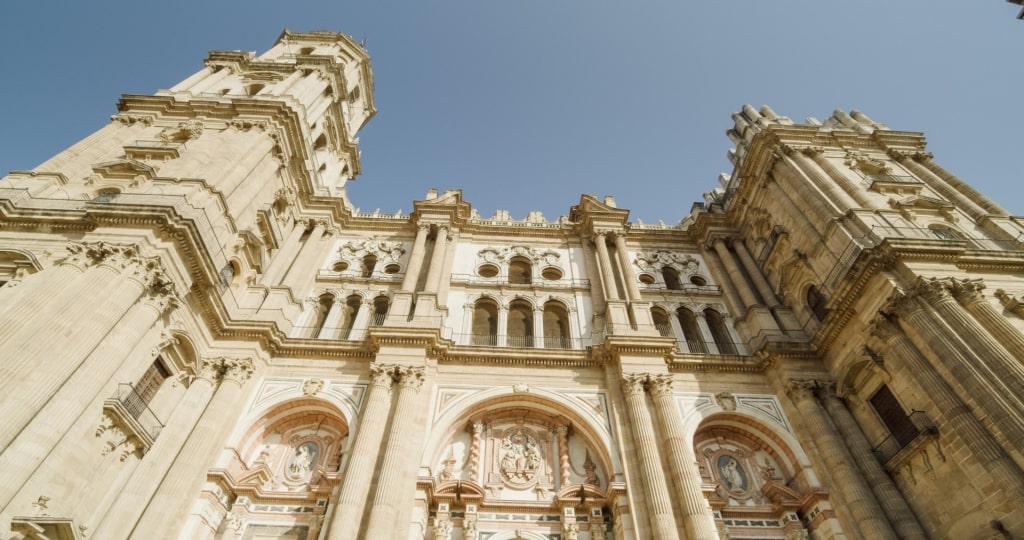
Malaga Cathedral
The mighty cathedral of Malaga—officially the Nuestra Señora de la Encarnación—was completed in 1782, over 250 years after the building’s construction began.
This impressive church in Malaga’s Old Town features a single tower. Though its original plans included two, the second tower was never built due to a lack of funds.
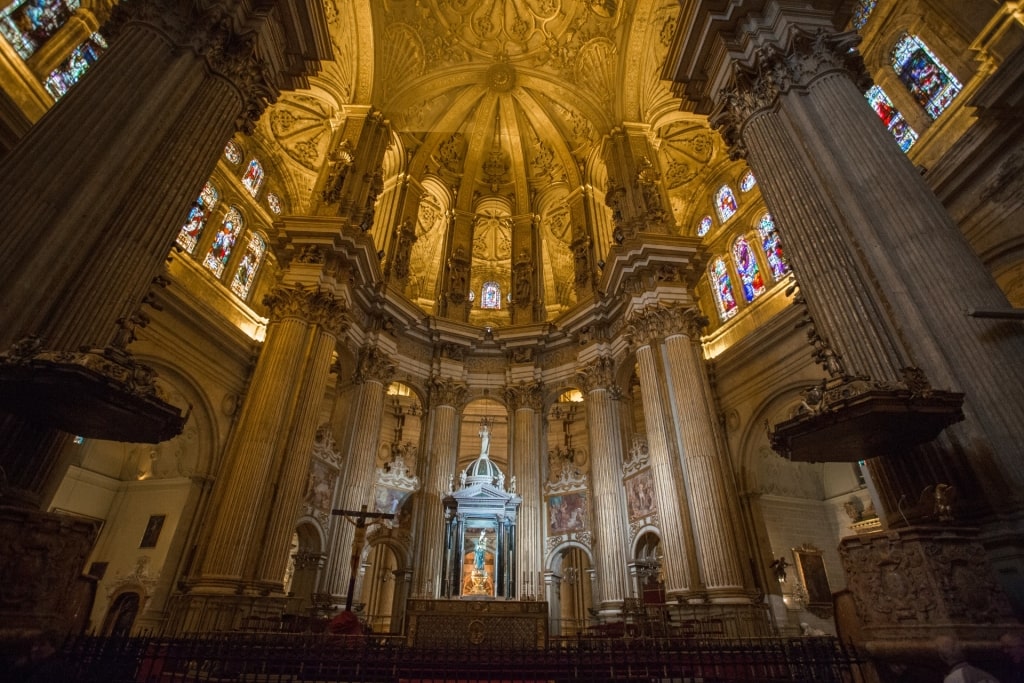
Malaga Cathedral
The interior of Malaga Cathedral is magnificent, with three early Renaissance naves, ribbed vaults, soaring stone columns, and 17th-century cedarwood and mahogany choir stalls. There are several chapels, too, including San Rafael’s and San Sebastián’s.
Explore the cathedral’s grounds to discover the adjoining Iglesia del Sagrario, a 15th-century church on the site of a former mosque.
If you’re feeling active, you could scale the 200-plus steps to reach the cathedral’s rooftop terraces where you’ll be treated to far-reaching city views.
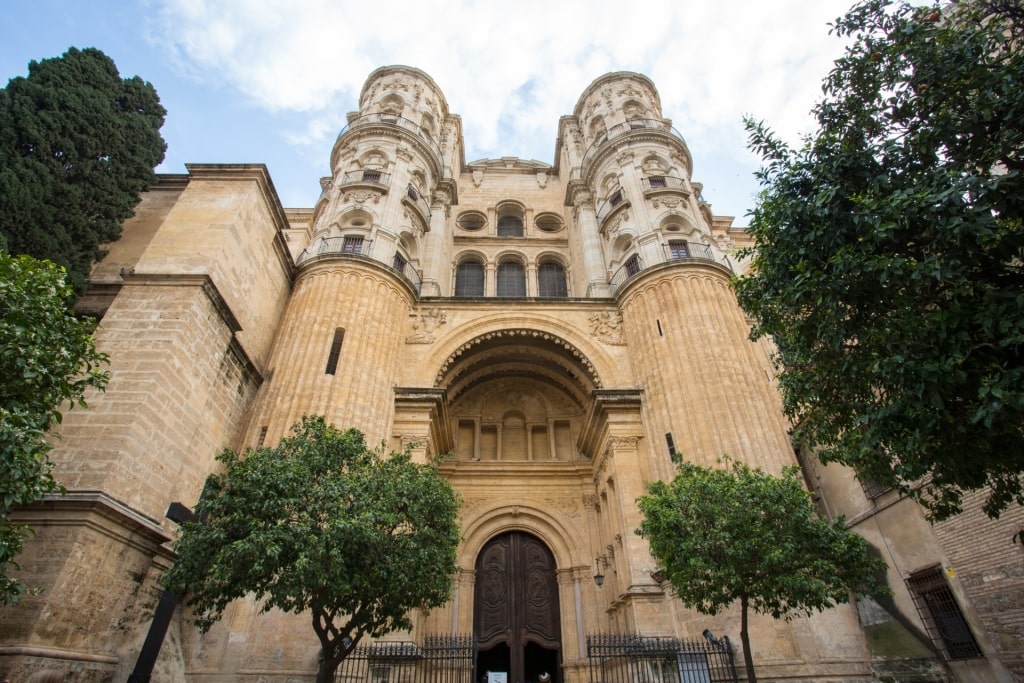
Malaga Cathedral
End your time exploring Malaga Cathedral with a stroll through the attractive gardens, adorned with ponds and a variety of palm trees, to experience Spain’s nature. Cypress, rose, ficus, bird of paradise, and bitter orange trees line the pathways.
Cathedral of Barcelona
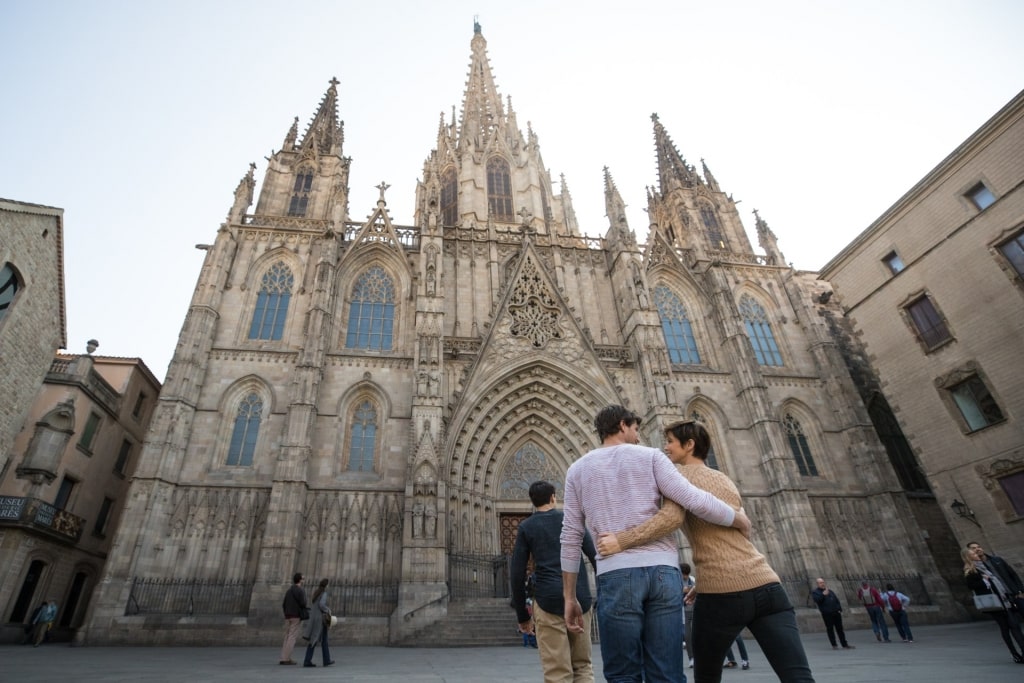
Cathedral of Barcelona
Among the jumble of cobbled streets in Gothic Quarter lies Barcelona Cathedral, easily one of the most jaw-dropping churches in Spain and known locally as La Seu.
Built on the site of an earlier church at the end of the 13th century, the captivating Cathedral of Barcelona features three naves and is characterized by tall buttresses and gothic spires. This clever design draws the eyes up the length of the cathedral.
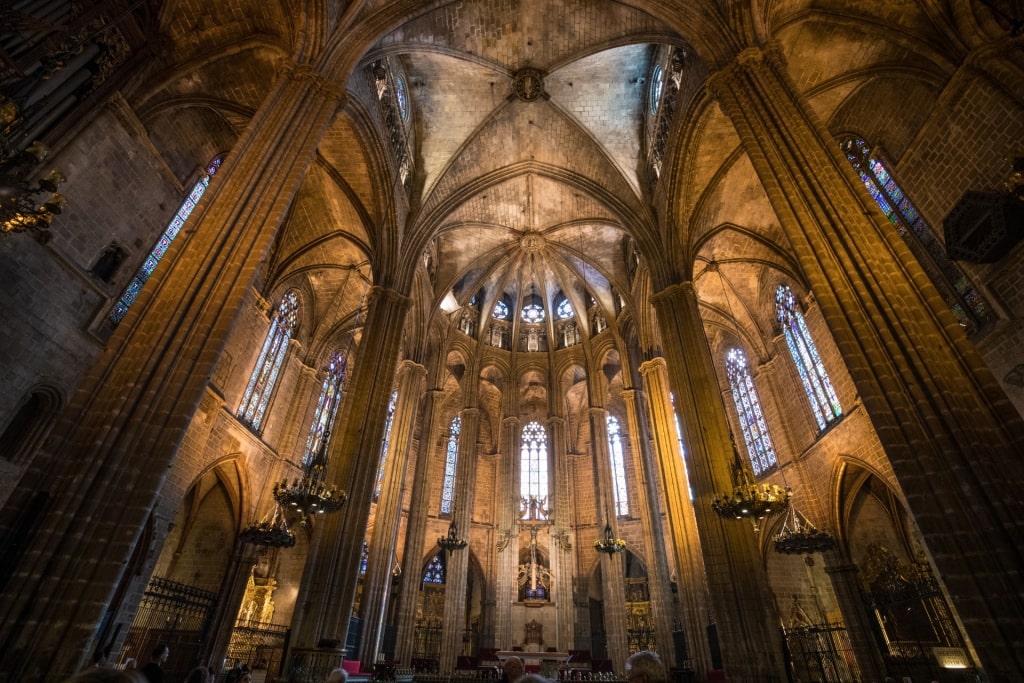
Cathedral of Barcelona
Explore the 14th- and 15th-century rectangular cloister and the pretty chapel of Santa Lucía. The cathedral’s organ is another noteworthy draw; located in the upper gallery under the nave, it was built between 1537 and 1539.
Within the cathedral’s chapels, visitors can also spy painted altarpieces by Guerau Gener, Lluís Borrassà, Gabriel Alemany, and Bernat Martorell.
Read: Three Days in Barcelona
Mosque-Cathedral of Córdoba, near Malaga

Mosque-Cathedral of Córdoba, near Malaga
In Córdoba, one of Spain’s most celebrated cities, you will find the UNESCO World Heritage mosque-turned-cathedral.
Wander across the Roman Bridge of Córdoba, originally built in the first century BC, and through the Puerta del Puente, the city’s ancient gate, to reach the Mosque-Cathedral of Córdoba.
This ornate church has a complex history, beginning in the eighth century as a mosque before being consecrated as a cathedral in the 12th century.

Mosque-Cathedral of Córdoba, near Malaga
While the cathedral has lost some of its Moorish details, it remains a staggeringly beautiful church. There’s a 300-foot belfry, which replaced the original minaret, a central high altar, and several chapels along the sides to discover.
The Mosque-Cathedral of Córdoba is home to some of Spain’s most precious religious artwork, including wall paintings, sculptures, and lavish altarpieces.
Look for the wall mural of the Baptism of Jesus located at the Altar of San Juan Bautista. The remarkable painting was uncovered by accident in 1989 and is thought to date from the late 14th century.

Patio de los Naranjos, near Malaga
Seek out pockets of shade in the Patio de los Naranjos, the cathedral’s cypress and orange tree-filled courtyard.
Dedicate time to wandering the city’s labyrinthine Jewish Quarter, too. Another of Córdoba’s UNESCO World Heritage Sites, the Jewish Quarter spreads from the cathedral towards the city’s historic synagogue.
La Seu Cathedral, Palma De Mallorca
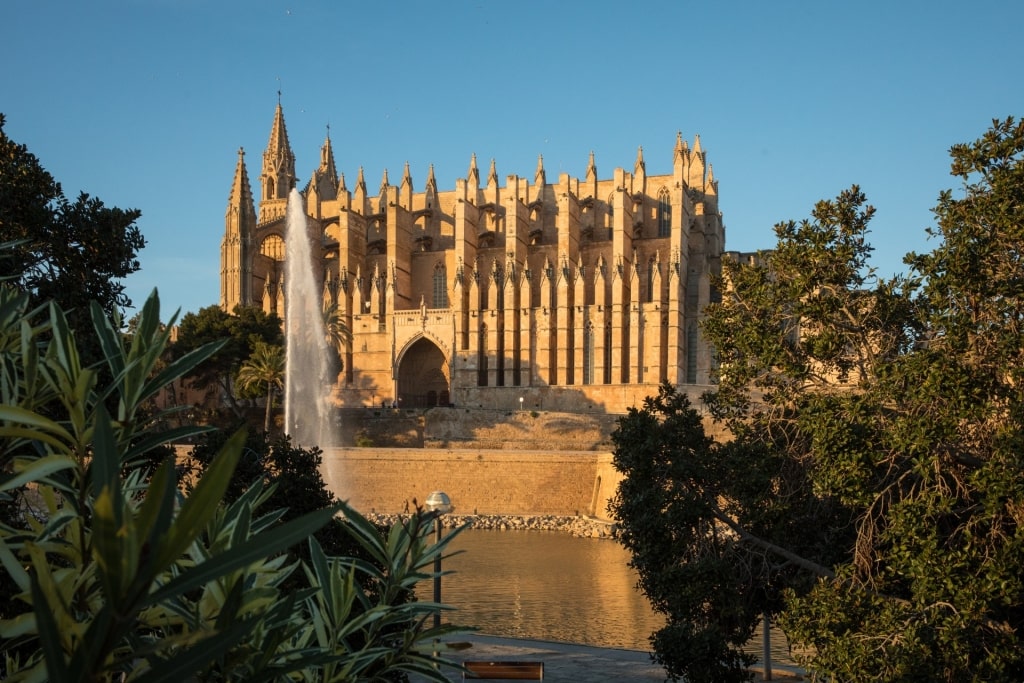
La Seu Cathedral, Palma De Mallorca
La Seu Cathedral is a gothic church dominating Palma’s skyline on the Spanish island of Mallorca.
La Seu shares similarities with other famous churches in Spain in that it was constructed on the site of a mosque, itself atop a former Roman citadel. The sprawling cathedral was completed in the early 1600s after work began on the building in the late 13th century.
One of the most beautiful places in Spain, La Seu features a towering 144-foot central nave, a Corpus Christi altarpiece, a gorgeous cloister, and a tower with nine bells. The cathedral also contains tombs of members of the Royal House of Mallorca within Trinity Chapel, though this is off-limits to visitors.
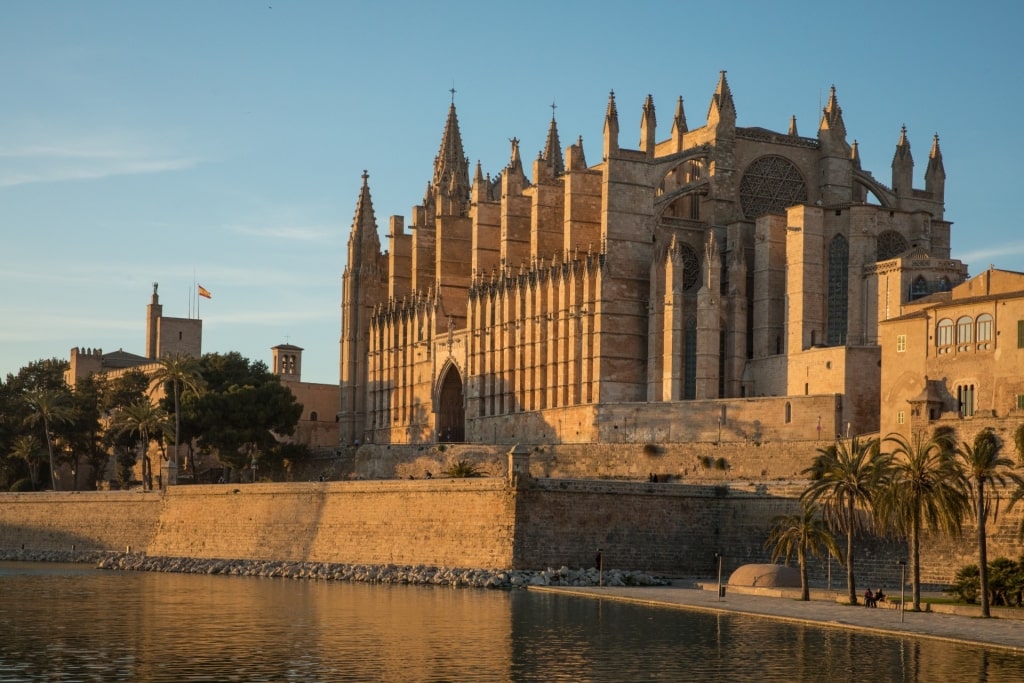
La Seu Cathedral, Palma De Mallorca
In the early 20th century, a disciple of legendary Catalan architect Antoni Gaudí worked on a major restoration of the cathedral’s interior, which included relocating the choir stalls.
Step inside to peer up at the cathedral’s emblematic Gothic Eye—considered one of the largest rose windows in the world—which allows sunlight to stream inside the church.
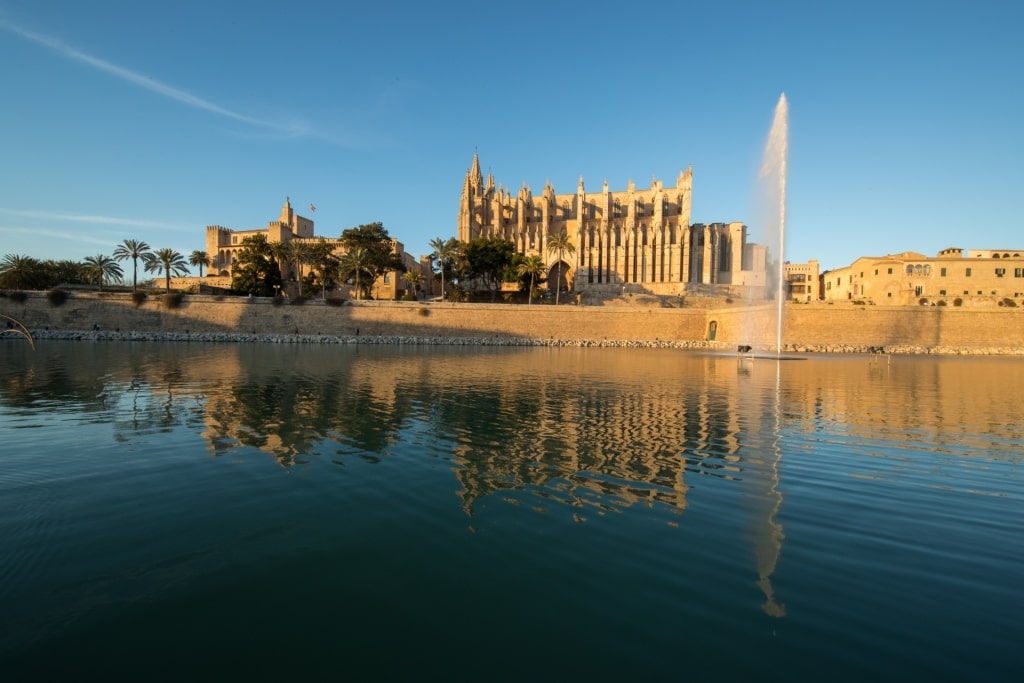
La Seu Cathedral, Palma De Mallorca
After exploring the cathedral and its extravagant art collection, stroll through the tree-lined Parc de la Mar of Palma de Mallorca for some of the best views of La Seu from near the waterfront.
Seville Cathedral, Seville
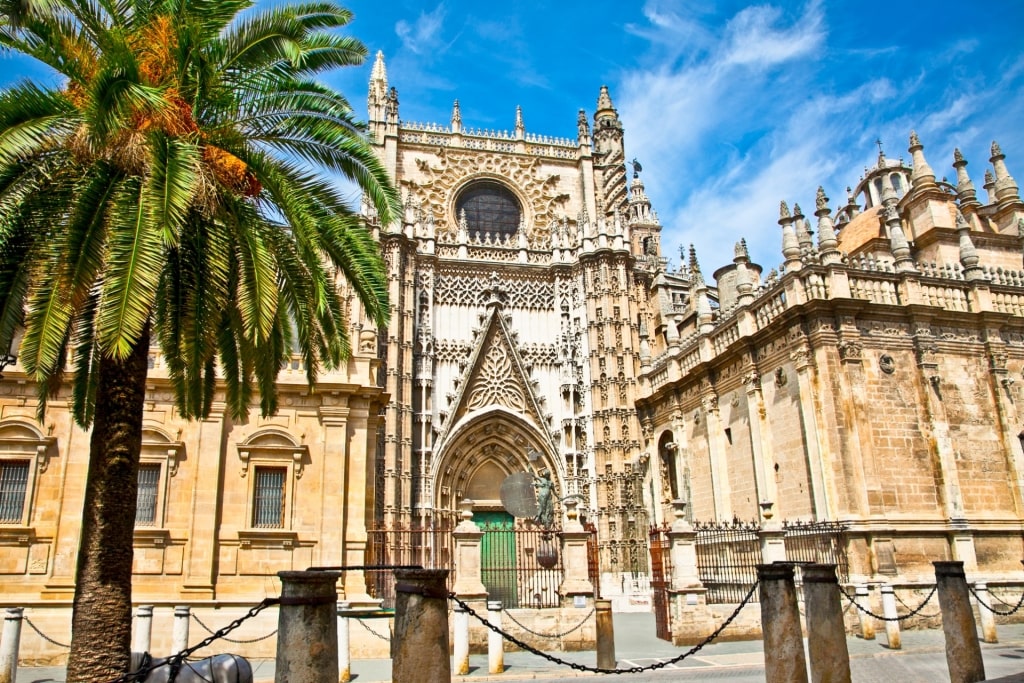
Seville Cathedral, Seville
If you only have a short time to spend in sun-baked Seville, make sure the city’s flamboyant cathedral—the largest gothic cathedral in the world—is top of your list.
The UNESCO-listed cathedral lies on the site of the 12th-century Aljama mosque, housing 80 side chapels and a central nave that rises 138 feet.
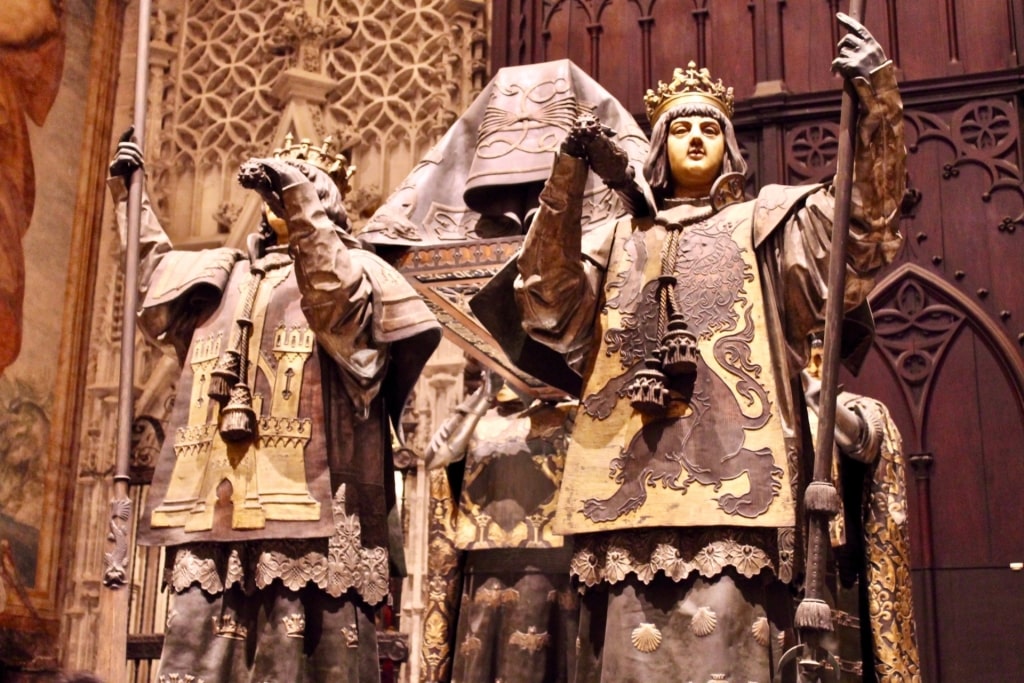
Tomb of Christopher Columbus inside Seville Cathedral, Seville
One of the most prominent features of Seville Cathedral is the tomb of Christopher Columbus, with the Italian explorer interred in the church.
Admire La Giralda—the cathedral’s bell tower that was once a minaret—from a shady spot in Puerta del Perdón y Patio de los Naranjos. This leafy courtyard features a central fountain and rows of orange trees beside the cathedral.
Cathedral Santiago de Compostela, near Vigo

Cathedral Santiago de Compostela, near Vigo
Pilgrims have traveled St. James’ Way—also known as the Camino de Santiago—to reach this iconic cathedral for centuries. As the alleged resting place of the Apostle St. James, the ancient Cathedral Santiago de Compostela is one of the most famous churches in Spain.
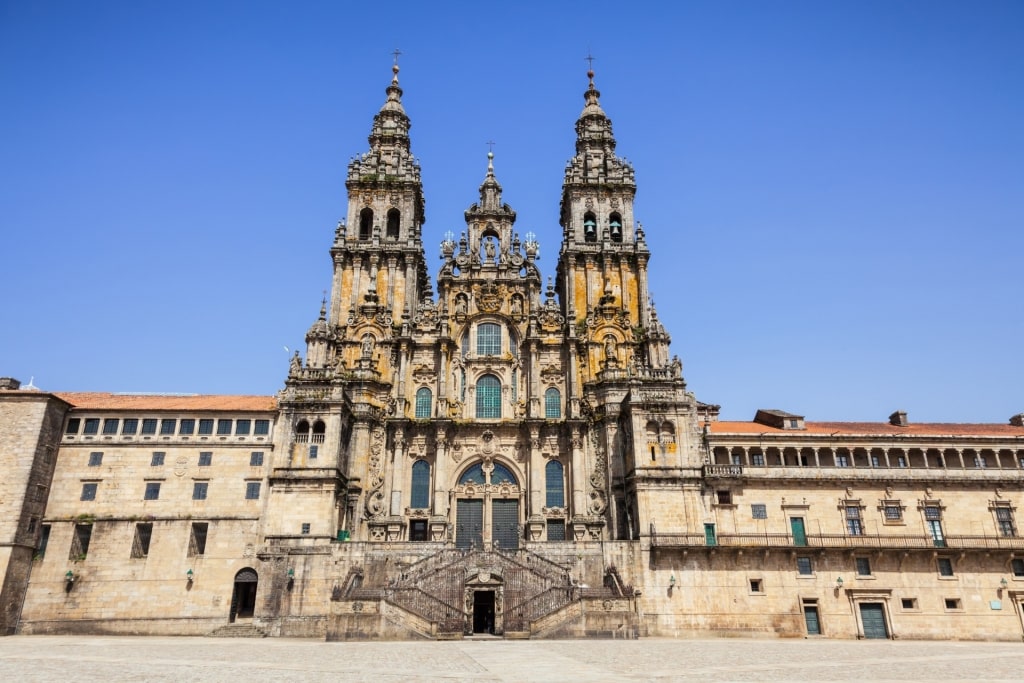
Cathedral Santiago de Compostela, near Vigo
Offering a masterclass in stonemasonry, Cathedral Santiago de Compostela features neoclassical, romanesque, and baroque façades. The Obradoiro façade, facing Plaza del Obradoiro, is arguably the most fanciful, with bell towers, a series of large central windows, columns, and balconies.
Cathedral Santiago de Compostela’s spectacular design is based on a Latin cross formation, with side chapels arranged along the interior. See the Portico de la Gloria and the main altar’s figure of St. James. You could also head to the rooftop to take in the sweeping views of Santiago de Compostela.
Read: Insider’s Guide to Vigo, Spain
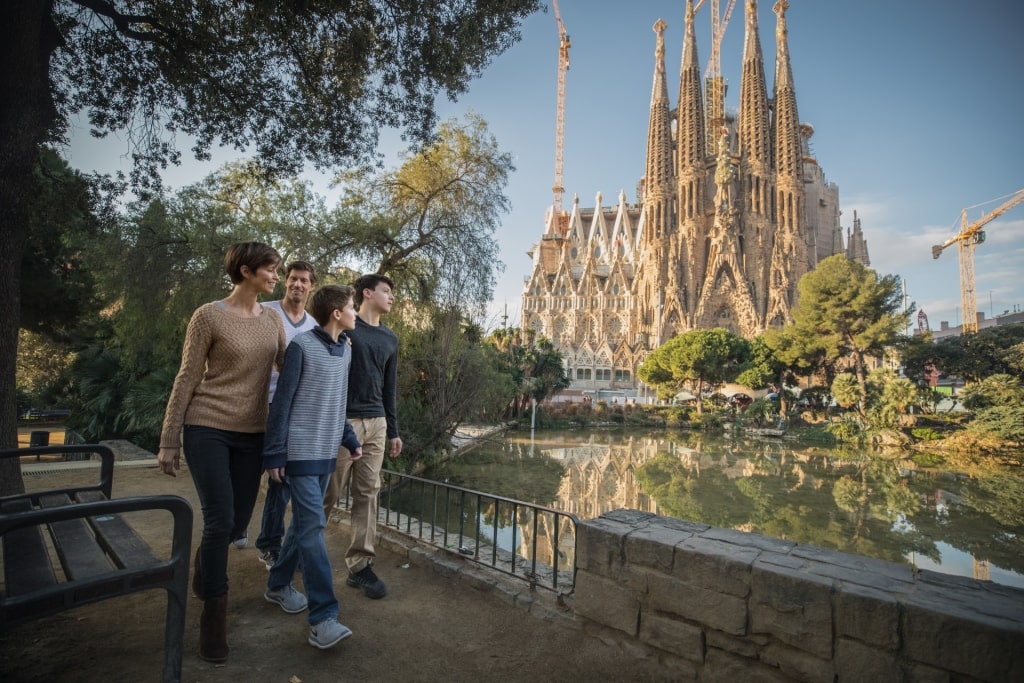
La Sagrada Familia, Barcelona
Fill your memory with these life-affirming churches on one of Celebrity’s cruises to Spain. Browse itineraries and plan your European adventure.
